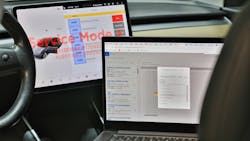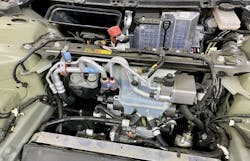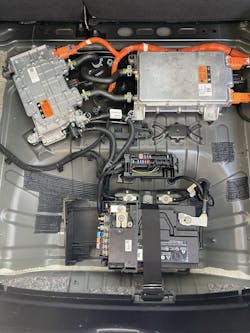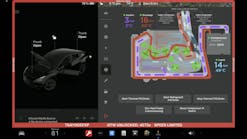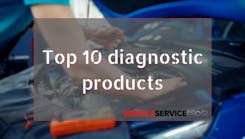Addressing hybrids, extended range, and full battery electric vehicles
What you will learn:
- Modern electrification history
- Addressable market
- Vehicle technology changes
- Diagnostic solutions
In recent times, most of the auto manufacturers have now pledged to move more of their fleet to electrified platforms with an end goal of 100 percent battery electric vehicles (BEV) production slated for the future. What this means is soon we will be witnessing an accelerated ramp up of new offerings into the marketplace with some of these vehicles landing in aftermarket service bays very soon. Now some aftermarket service providers are already addressing hybrids, extended range, and full battery electric vehicles in their service facilities today.
Even if you haven’t seen these vehicles yet, you may want to consider taking a deeper look at what this technology shift might mean for you, and your business and learn what you can do to prepare. If you haven’t read it yet, take a look at the article I wrote on this subject back in 2020.
Addressable market
Here in the United States, the first electrified platform to enter the market was the Honda Insight which occurred in December 1999. A little over half a year later, Toyota brought the Generation 1 Prius to the U.S. and the rest of the world. To date, the Toyota Prius is the best-selling hybrid electric vehicle.
Although the U.S. vehicle market only has about a three percent saturation, this can vary greatly depending on your local market. Here in Southern California, the hybrid/electric vehicle market is close to six percent. In my shop, we see hybrid and electric vehicles frequently and have been providing a range of services on these for over a decade. Some of my industry colleagues have been servicing hybrids longer than that. For example, Carolyn Coquillette at Luscious Garage in San Francisco started her business from the ground up focusing primarily on hybrid vehicles.
General service
Although hybrid vehicles introduce several complexities to the vehicle, in my opinion, one shouldn’t be afraid of them. Many of the maintenance services these electrified platforms require isn’t overly complex. In fact, with a basic overview and a discipline to follow service information procedures, one can competently address most needs on these vehicles. However, it is strongly suggested that you look at these vehicles from a business professionals’ perspective and commit to providing professional-grade service and repair to these vehicles.
Training, education, knowledge
As mentioned earlier, one can position their business to capture more of the market (and market potential) by preparing their staff for the challenges they may face. There is a plethora of excellent resources one can leverage to elevate their level of service. (See sidebar) in order to assess the knowledge and skills needed to provide excellent service can be based upon numerous factors. One example would be to look at what some of the automobile manufacturers specify for their service providers, and another might be based upon standards that are being established at some of the colleges and universities around the country. The National Science Foundation has awarded several grants over the past several years to address the changes in education and minimum standards needed to provide service on advanced transportation vehicles. The groups working through these grants have put in a ton of effort and have assembled several resources to help support their efforts.
Systems
As mentioned earlier, although the electrified platforms present complexities, service professionals looking to learn more about alternative propulsion can overcome them by applying the same strategies used to understand the complex systems that came before them. BEVs typically possess a high-voltage energy storage system (ESS), a low voltage system that is used to run the various controllers populating the vehicle, a DC-DC converter that is used in lieu of an alternator to maintain the 12V system, traction motor(s) used to propel the vehicle, and a few thermal management systems designed to keep systems running efficiently (Figure 2).
On top of that the vehicle has suspension, steering, tires, and brakes that will require periodic maintenance. Breaking the systems down further you’ll find on-board chargers used to convert AC mains and HV DC infrastructure power sources to replenish the vehicle’s ESS. You will likely find that these vehicles will have multiple communications networks with a lot of the diagnostics being carried out using highly capable scan tools. (See Figure 1)
Certification, tooling, and equipment
The high voltage potential found on hybrids and BEVs in Europe have resulted in credential requirements in order to perform certain services on such vehicles. And although that doesn’t really exist here in the states, it might someday. According to one of my colleagues, Daniel Brown (no relation) who is an expert in HEVs and BEVs and is a technical training manager for Lucas Nuelle, shared with me that the Institute for the Motor Industry – IMI based in the United Kingdom has estimated that less than seven percent of its service industry has the qualifications needed to provide service on electrified platforms.
There are specific personal protective equipment (PPE) requirements for those working on these high-voltage systems. Additionally, there are specific guidelines on how PPE is checked and validated prior to use. Some items such as gloves have a shelf life and will need to be recertified on time. Typically, one will usually find performing general services do not require the use of the high voltage PPE which is usually limited to direct work with the vehicle’s ESS (Figure 3).
BEVs/hybrids and the like went through a ton of engineering design that meets several standards through SAE and ISO. These standards have resulted in vehicle platforms that have very good safeguards in place to prevent harm to vehicle operators and service personnel. However, service precautions should always be adhered to in order to stay safe. It's important to seek out and use the correct tooling, as well. The proper category rated (CAT) equipment as defined by the International Electrotechnical Commission (IEC) 61010 standard should be top of mind when choosing the proper tooling and equipment for work on hybrid and electric vehicles. The CAT ratings are in place to define how much voltage the tool can tolerate without causing any damage or harm.
CAT ratings for tools and test equipment should typically meet either a CAT III or CAT IV level depending on the requirements. My multi-meter of choice is Fluke as I have found them to be highly reliable devices for decades in my shop. The table in Figure 4 outlines the voltage levels.
Your test equipment and test leads need to not only meet the rating requirements but should be closely inspected for damage prior to each use. Do not use test leads that don’t have the requirements needed to keep you safe. Frayed or damaged test leads can be a hazard and you don’t want to end up as a statistic. And as mentioned earlier, you will want to make sure that you’re equipped with the proper diagnostic tools such as a highly capable scan tool and the ability to carry out module programming operations.
If you’re working on a specific carline, an OEM-specific scan tool may be the right choice. For example, if you’re working on Toyota/Lexus automobiles, then you should look at their Techstream offering. For a low annual fee and an inexpensive but very capable J2534 interface such as the Mongoose-Plus offered by Opus, one will have the same capabilities dealership technicians have access to. The Techstream subscription provides one access to a PC-based scan tool, reprogramming, and service information.
Note: Although some vehicles today are supported with over-the-air updating capabilities, there will still be instances where the service technician will be required to initiate firmware changes locally with external 12V support systems attached to the vehicle.
Trusted partner marketing opportunity
In my opinion based upon my experience of operating an independent repair facility and owning several vehicles including multiple HEVs and a BEV, I can attest to the fact that a BEV will require far less maintenance. But when they do, the vehicle owner will likely prefer to trust their vehicle to a competent service provider who demonstrates a high level of expertise with these modern platforms. Given the fact that these platforms are moving to become more and more software defined, consumers will likely need to rely on a service provider who can support them with not only expert maintenance services, but to also provide support by helping them understand their vehicle and the changes in features and operation future software upgrades may offer.
